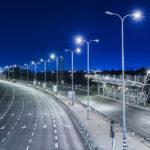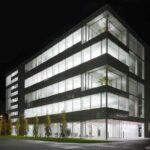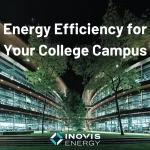LED Parking Lot and Roadway Lighting for Safety and Energy Efficiency
Home » Solutions » Lighting Solutions » Parking Lot and Roadway Lighting
Upgrading parking lot and roadway lighting improves safety, security, and visibility for pedestrians and vehicles while significantly reducing energy and maintenance costs. Modern LED systems provide superior light quality with lower operating expenses.
Table of Contents

What Is Parking Lot and Roadway Lighting?
Parking lot and roadway lighting refers to pole-mounted or area lights used to illuminate vehicle pathways, surface lots, driveways, and site perimeters. These systems are critical for visibility and safety during nighttime hours and are often subject to energy code, zoning, or security requirements.
Typical applications include:
-
Surface parking lots at schools, retail centers, and offices
-
Access roads, fire lanes, and delivery areas
-
Drive-through lanes and pickup zones
-
Parking garage entrances and perimeter lighting
-
Facility entry and drop-off points
LED upgrades in these areas improve visibility while reducing glare, improving light distribution, and lowering energy use.
Why Upgrade Parking and Roadway Lighting?
Key Benefits:
-
Increase safety and visibility for drivers and pedestrians
-
Improve security and reduce risk of liability
-
Cut outdoor lighting energy use by 60–80%
-
Eliminate dark zones with optimized pole spacing and optics
-
Reduce maintenance with long-life, weatherproof fixtures
-
Comply with lighting codes and dark-sky ordinances
-
Qualify for utility incentives on pole-mounted area lights
Parking and Roadway Lighting Functionality
LED area lighting fixtures are installed on poles or wall arms to provide consistent, directional illumination across large outdoor areas. Design considerations include:
-
Pole spacing and height for optimal coverage
-
Fixture type (e.g., shoebox, cobra head) based on application
-
Optical distribution to avoid glare and light trespass
-
Color temperature selection for security and comfort (typically 4000–5000K)
-
Optional controls for scheduling, dimming, or motion sensing
Photometric layouts are often used to ensure even light levels and compliance with local codes.
How LED Parking Lot Lighting Reduces Costs
These fixtures typically operate 12+ hours per day, meaning upgrades deliver rapid savings:
-
Lower wattage per fixture (e.g., 400W MH to 100W LED)
-
Fewer relamp cycles and truck rolls
-
Lower cooling load for nearby conditioned areas
-
Eligible for prescriptive utility rebates based on wattage and hours
Smart controls can further reduce energy use by dimming during off-peak hours or reacting to occupancy.
Industries That Benefit from Outdoor Area Lighting Upgrades
Related Facilities
Schools, commercial offices, retail centers, healthcare campuses, multifamily complexes, and municipal or public buildings with surface lots or access roads.
Our Parking Lot Lighting Upgrade Process
-
Site Survey and Layout Review – Document existing pole layout, fixture types, and light levels
-
Lighting Design (Optional) – Photometric layout to improve coverage and reduce glare
-
Fixture Selection – Choose optics, output, and controls based on needs
-
Rebate Mapping – Pre-apply for prescriptive or custom utility incentives
-
Installation – Coordinate with minimal disruption to parking or site access
-
Post-Install Support – Validate light levels and assist with final rebate paperwork
Funding Options for Outdoor Area Lighting
Parking and roadway lighting projects often qualify for:
-
Utility rebates on area lights and controls
-
Municipal or state facility improvement grants
-
Lighting-as-a-Service (LaaS) agreements
-
On-bill repayment or capital improvement funds
These projects often have short payback periods due to long runtimes and high fixture wattages.
Illuminate Safer, Smarter Outdoor Spaces
Upgrading your parking lot and roadway lighting improves safety, security, and visibility while cutting energy costs. Let’s evaluate your site and recommend the best LED solution.













